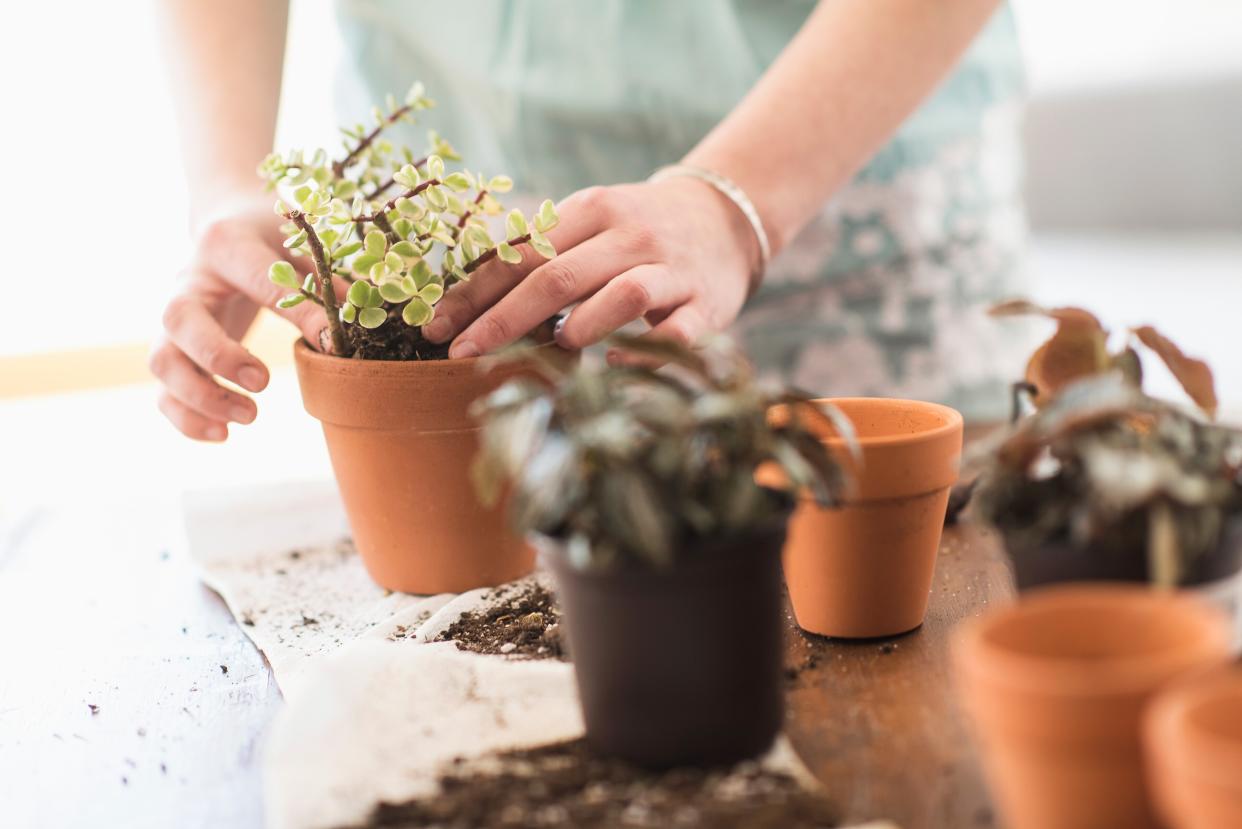How Often You Should Change the Soil in Your Houseplants—and the Best Way to Do It

Tetra Images/Getty
TABLE OF CONTENTS
On This Page
How Often to Replace the Soil
When to Replace the Soil
When to Change the Pot
Types of Soil to Use
How to Change Your Plant's Soil
If you want your houseplants to thrive, they need to be in a nutrient-rich environment where they'll get enough water, sun, and air. Over time, though, plants use up many of their soil's nutrients and organic material, says Jeana Myers, a North Carolina State horticulture extension agent. "The soil becomes depleted and hard, and won't hold water or nutrients as well." To keep your indoor plants healthy, you'll need to repot them with fresh soil.
Related: How to Successfully Repot Your Houseplants
How Often to Replace the Soil
It really depends on the plant, says Myers. "Faster-growing houseplants, like pothos and African violets, will benefit from annual repotting [with fresh soil]. Slower-growing plants, like cacti and sansevieria, or mother-in-law's tongue, can be repotted every one-and-a-half to two years."
When to Replace the Soil
Myers says spring is a good time to repot houseplants using fresh soil. "There's an abundance of sunlight during that time, so plants are going to have some significant root growth," she says, which will necessitate planting them in a larger pot. Repotting is also essential when:
a plant looks dried out and pops right out of the pot when you try to remove it
you water the plant and the water runs through to the pot's dish, which mean there's no more organic materials left to retain moisture
the plants aren't growing well and start to look slightly yellowish
the soil becomes overly firm to the touch
you see many roots growing out of the drain hole on the pot's bottom
When to Change the Pot
If you want to keep the size of a plant the same as it is, use the same pot but change the soil. If you want to give a plant more room to grow, use a new pot that's no more than an inch or two larger than what it's currently in. Don't make the mistake of putting a small plant in a too-big pot. "The plant is going to have a hard time getting enough air," says Myers, and without an adequate air supply, it won't last long.
Types of Soil to Use
What keeps plants happy and well-nourished is a potting mix, which is a light and fluffy combo of peat moss, pine bark, and perlite or vermiculite. Never use garden soil, which is too dense for a potted plant. "It contains clay or sand, which won't let the plants breathe enough or get enough oxygen to the roots," says Myers. "Your plants will not flourish." You can find potting mix at any garden center or nursery.
How to Change Your Plant's Soil
When you are ready to replace your plant's soil, follow these tips from Jayson Opgenorth, the director of horticulture for LiveTrends Design Group:
Slightly squeeze the current pot.
Place your hand on the soil—around the main plant—and turn it upside down to remove the pot, leaving the entire soil profile in your hands.
Carefully remove what easily pulls off from the top and sides of the soil profile, where there are no roots. [Note: Only do this if your soil truly needs to be replaced—and not just refreshed with a new layer around the root ball.]
"Think of replacing soil as open-heart surgery versus up-potting, which is more like mending a broken bone," Opgenorth says. "Both are necessary, but weigh out the risk factors."

